ess unit 1 - foundations of ess
1/38
There's no tags or description
Looks like no tags are added yet.
Name | Mastery | Learn | Test | Matching | Spaced |
|---|
No study sessions yet.
39 Terms
open system
exchanges matter and energy with its surroundings e.g. forest ecosystem
closed system
exchange energy but not matter, extremely rare in nature e.g. the carbon cycle
isolated system
exchange neither energy nor matter, do not exist naturally e.g. the entire universe
steady state equilibrium
characteristic of open system where there are continuous input and outputs of energy and matter but the system remains in the same state
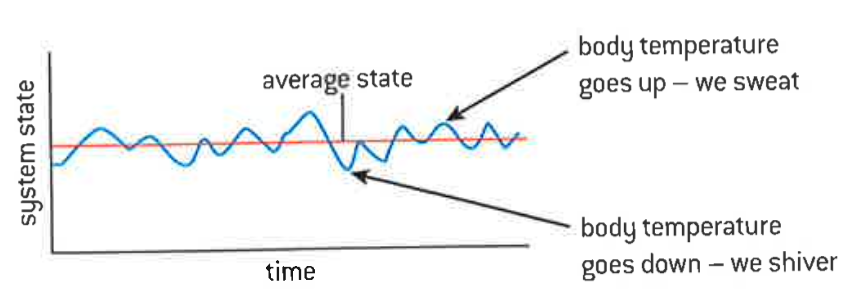
tipping points with example
minimum amount of change within a system that will destabilise it, causing it to reach a new equilibrium e.g. coral reef death
resilience of a system
its tendency to avoid tipping points and maintain stability
negative feedback
no changes occur, same state of equilibrium is maintained through self regulation
positive feedback
changes occur, shift in equilibrium through permanent changes
energy transfers with example
the flow of energy that doesn’t involve a change in state e.g. rain running off of a mountain into a river
energy transformations with 2 examples
the flow of energy that involves a change in form and state e.g. energy to matter (photosynthesis), light to heat
first law of thermodynamics with example
energy cannot be created or destroyed e.g. during photosynthesis light energy is converted into stored chemical energy
second law of thermodynamics
the entropy of a system not in equilibrium will tend to increase over time
entropy
a measure of disorder of a system, refers to the spreading out or dispersal of energy
example of steady state equilibrium
a population of ants may stay the same but individual organisms are born and die, if the birth and death rates are the same there is no change in population size
static equilibrium with example
there is no change over time, only occurs in non-living systems e.g. a pile of rocks
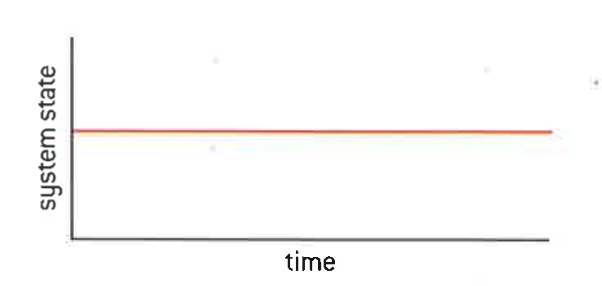
stable equilibrium
system will return to the same equilibrium after a disturbance
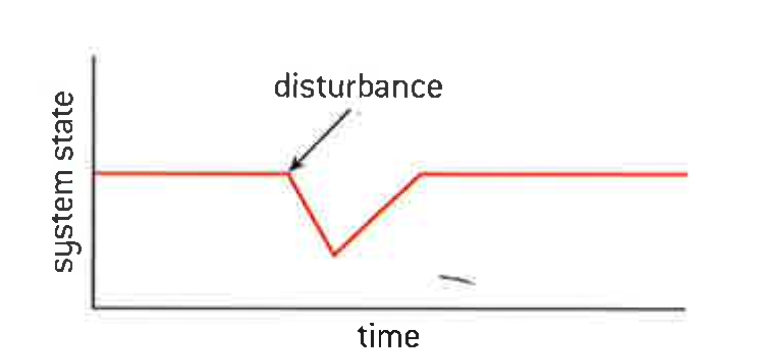
unstable equilibrium
system shifts to a new equilibrium after a disturbance
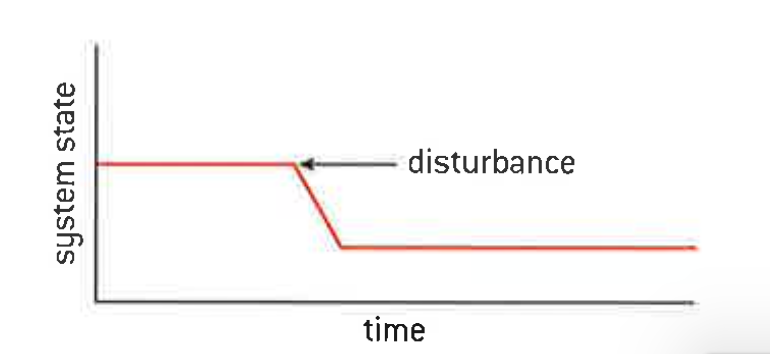
negative feedback example
there is a good supply of food in an area, number of grazers increases through migration, grassland becomes overgrazed, decreased food supply which limits the number of grazers so they migrate or die, grassland is large again
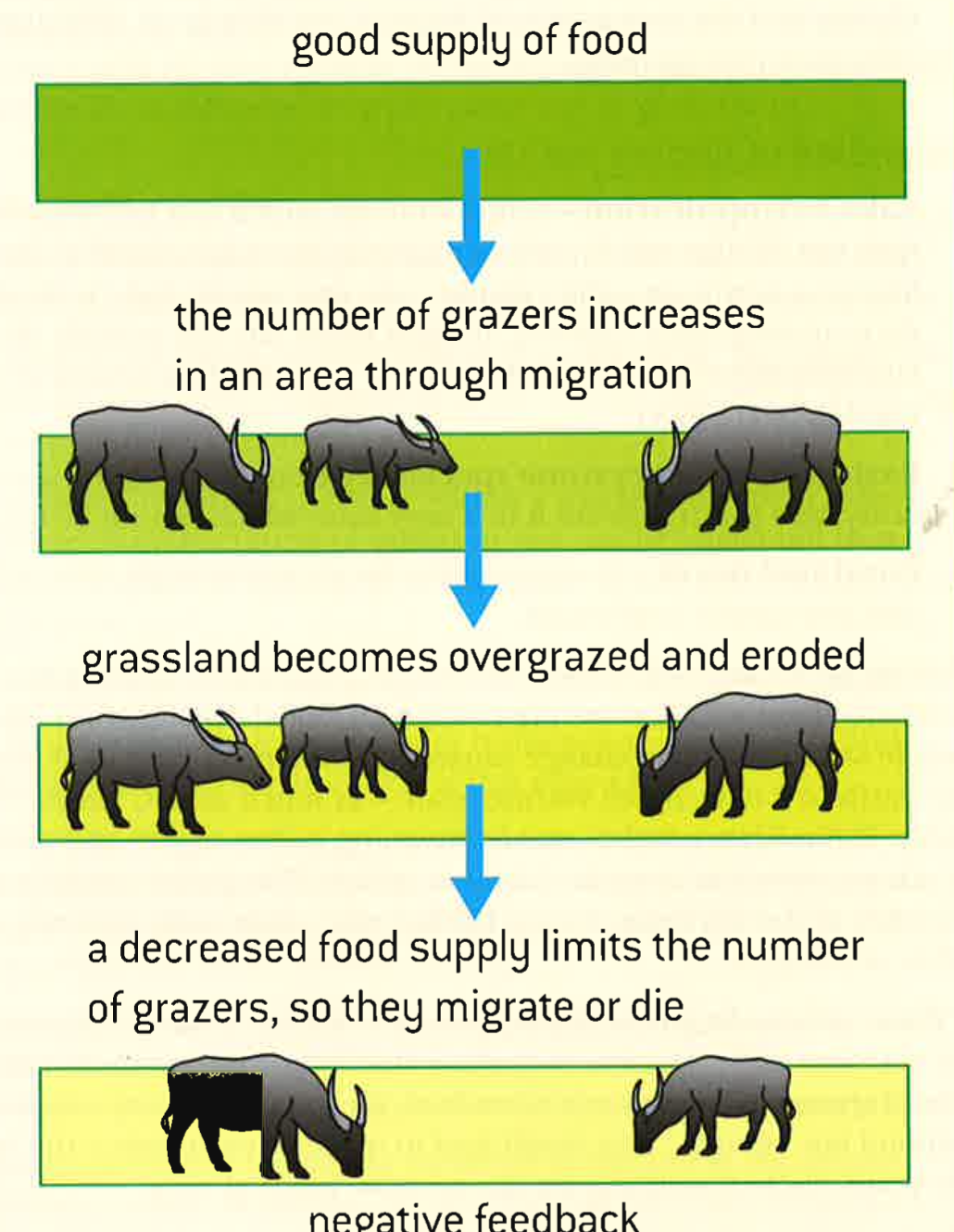
positive feedback example
rising global temperatures, ice caps melt, decreases Albedo, more solar radiation is absorbed, rising global temperatures

environmental value systems
a particular worldview set of values that shape the way groups perceive environmental issues
ecocentric beliefs
see themselves as equal to other living things
goal is sustainability
believe in interdependence
aim to spread awareness
anthropocentric beliefs
believe humans must sustainably manage the global system through environmental regulation
environmental managers such as NGOs, politicians
technocentric beliefs
believe technological development can provide solutions to environmental issues
value the understanding of natural systems
counter resource depletion with resource replacement
factors that affect ecosystem resilience
complexity (more is better)
size (larger is better)
biodiversity
genetic diversity
stable climate
rate of reproduction (faster is better)
sustainability
the use and management of resources that allows full natural replacement of the resources exploited and full recovery of the ecosystems affected by their extraction and use
ability to meet the current generations needs without harming the future generations socially, economically and environmentally
natural capital
natural resources that can produce a sustainable natural income of goods and services e.g. trees, soil, water
natural income
the monetary value and yield of natural capital
3 groups of natural capital
renewable, non-renewable and replenishable resources
ecological footprint
area of land expressed in global hectares (GHA) with the resources required to meet the needs of an individual or society
type of pollutants
matter (gases, liquid or solids that are organic or inorganic)
energy (sound, light, heat)
living organisms (invasive species)
primary pollutants with example
are active on emission e.g. carbon monoxide from fossil fuels
secondary pollutants with example
formed by primary pollutants undergoing physical or chemical changes e.g. sulphuric acid forms when sulphur trioxide reacts with water
non-point source pollution with example
release of pollutants from numerous sources that cannot be easily identified and are harder to address e.g. air pollution, rainwater
point source pollution with examples
release of pollutants from a clearly identifiable site and is easier to manage e.g. a factory chimney, sewage pipes
pollution management model
changing human activity which produces pollutant → controlling the release of pollutant → working to clean-up and restore damaged ecosystems to reduce impact
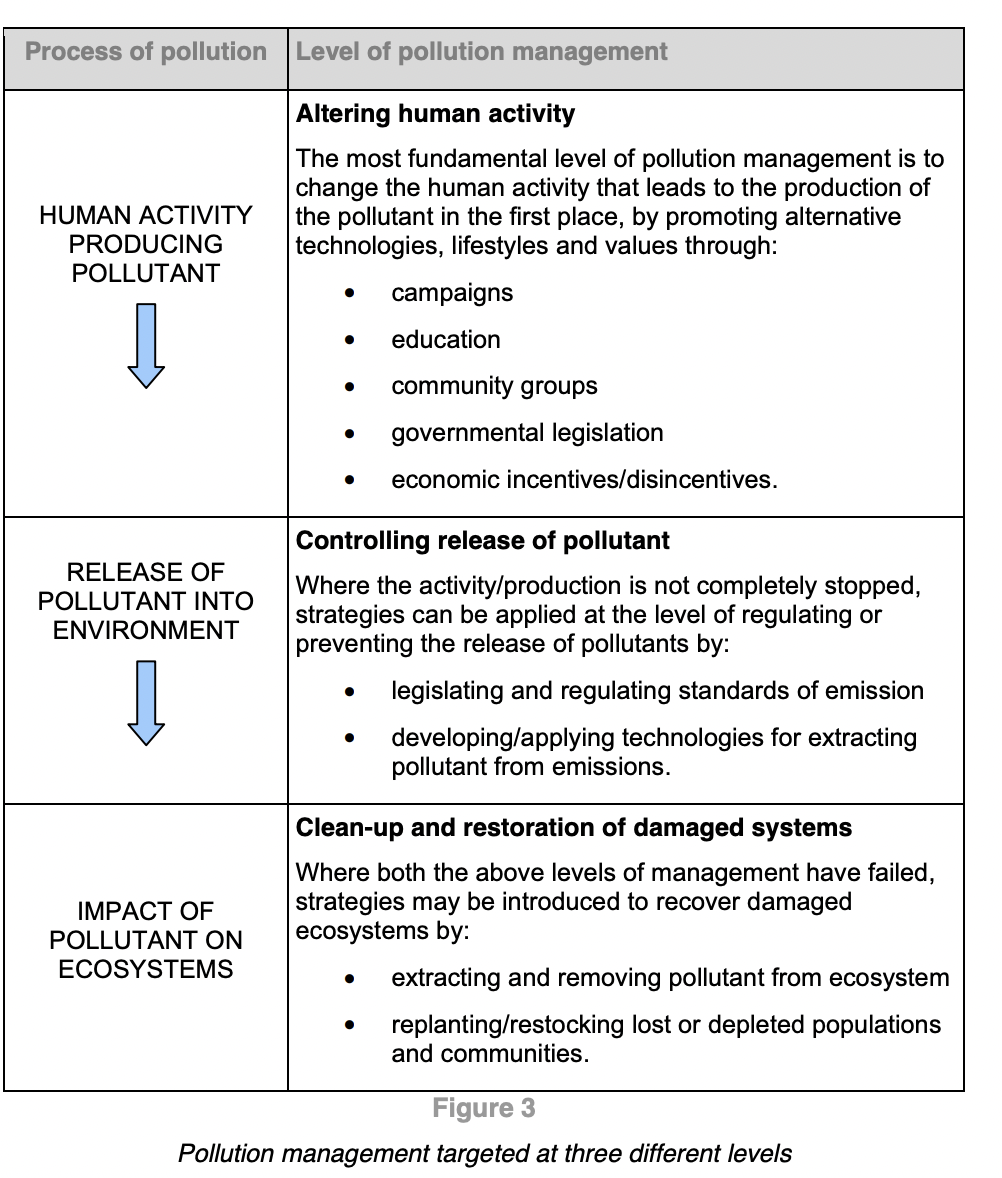
two types of ecocentrists
soft ecologists → self reliant
deep ecologists → who value nature above humanity
two types of technocentrists
cornucopians → who believe that we can solve any environmental issues with technology
environmental managers → who believe we need governments to protect the environment
bioaccumulation
the build up of a pollutant within an organism or trophic level because it cannot be broken down
biomagnification
the increase in concentration of persistent pollutants along a food chain